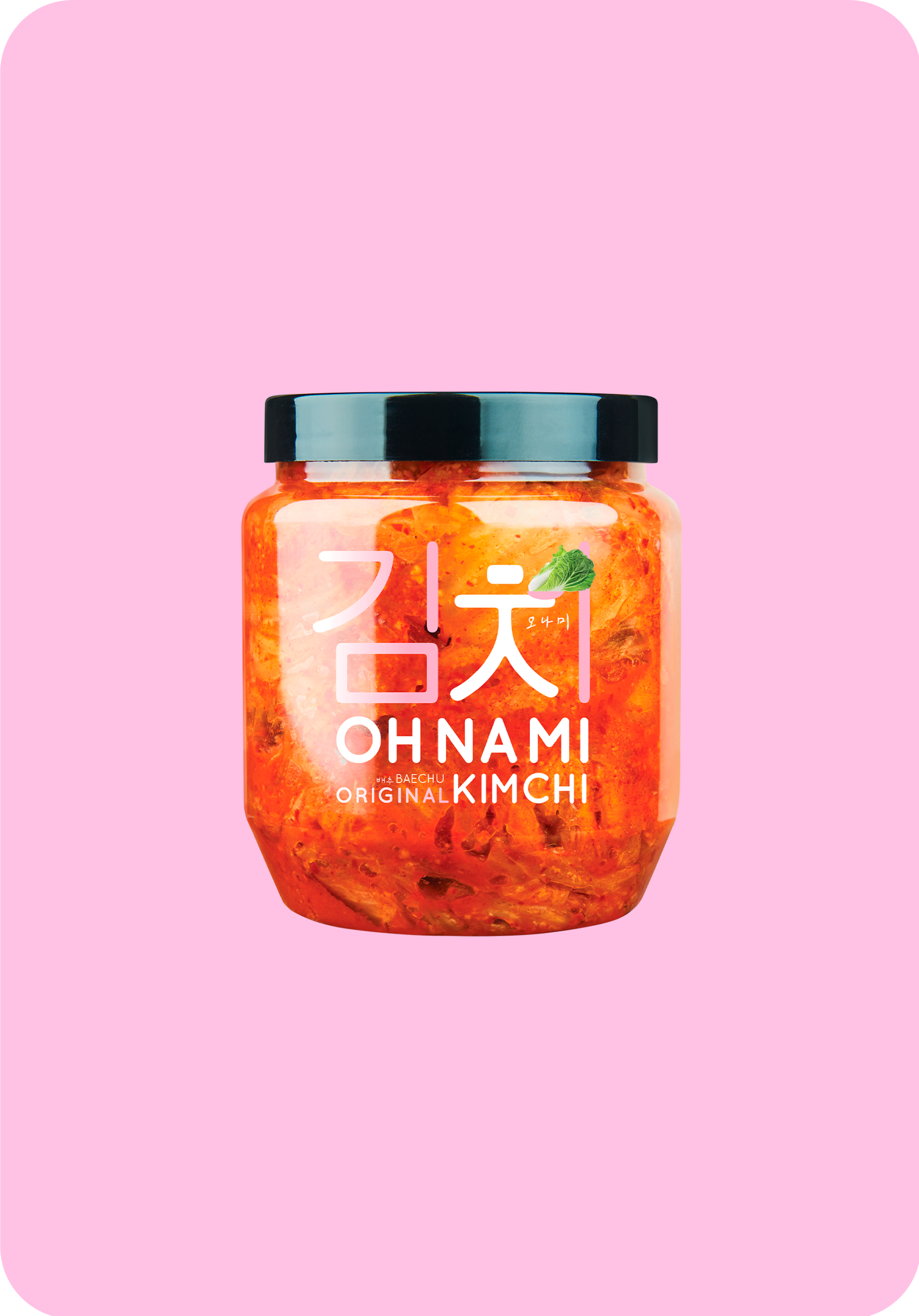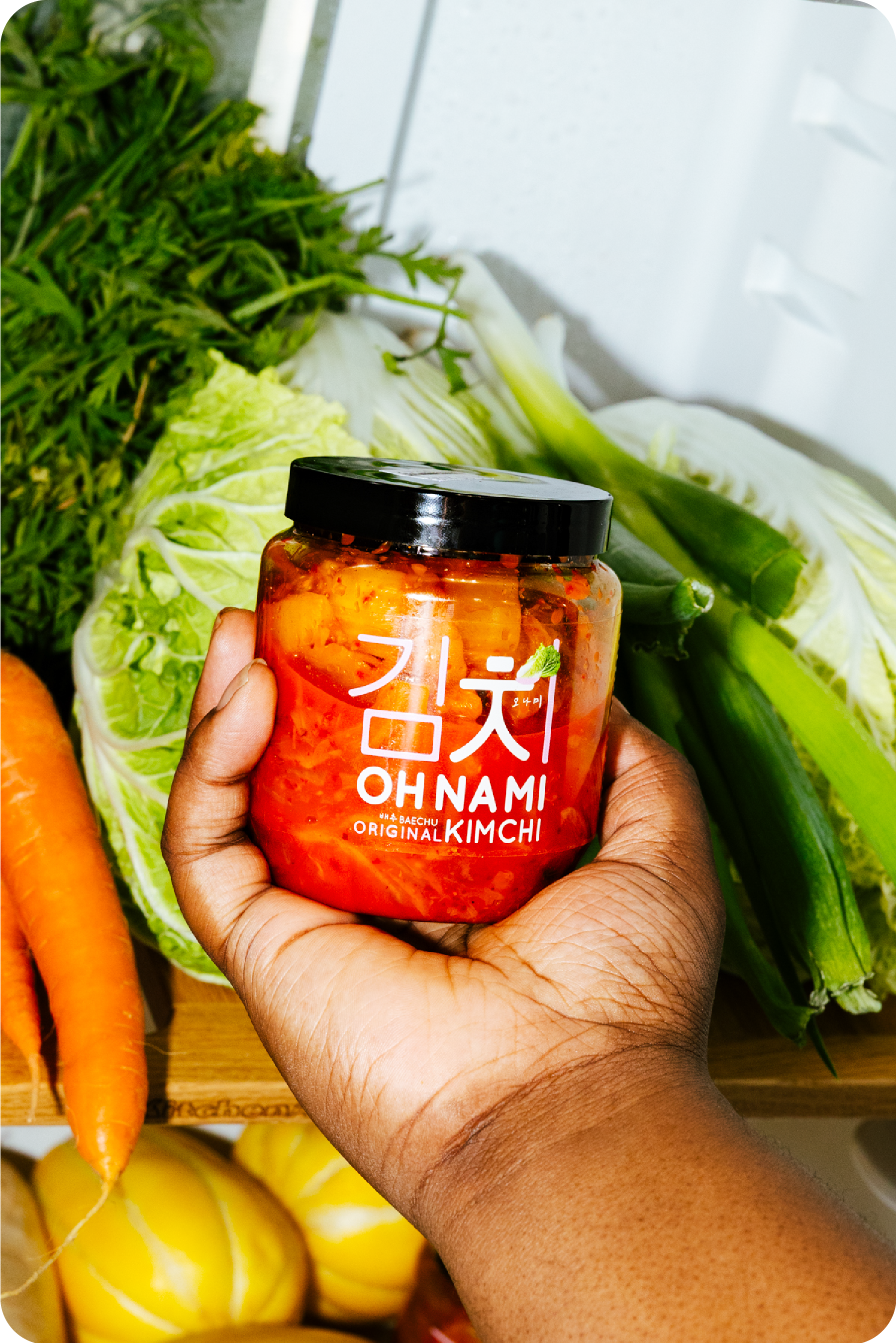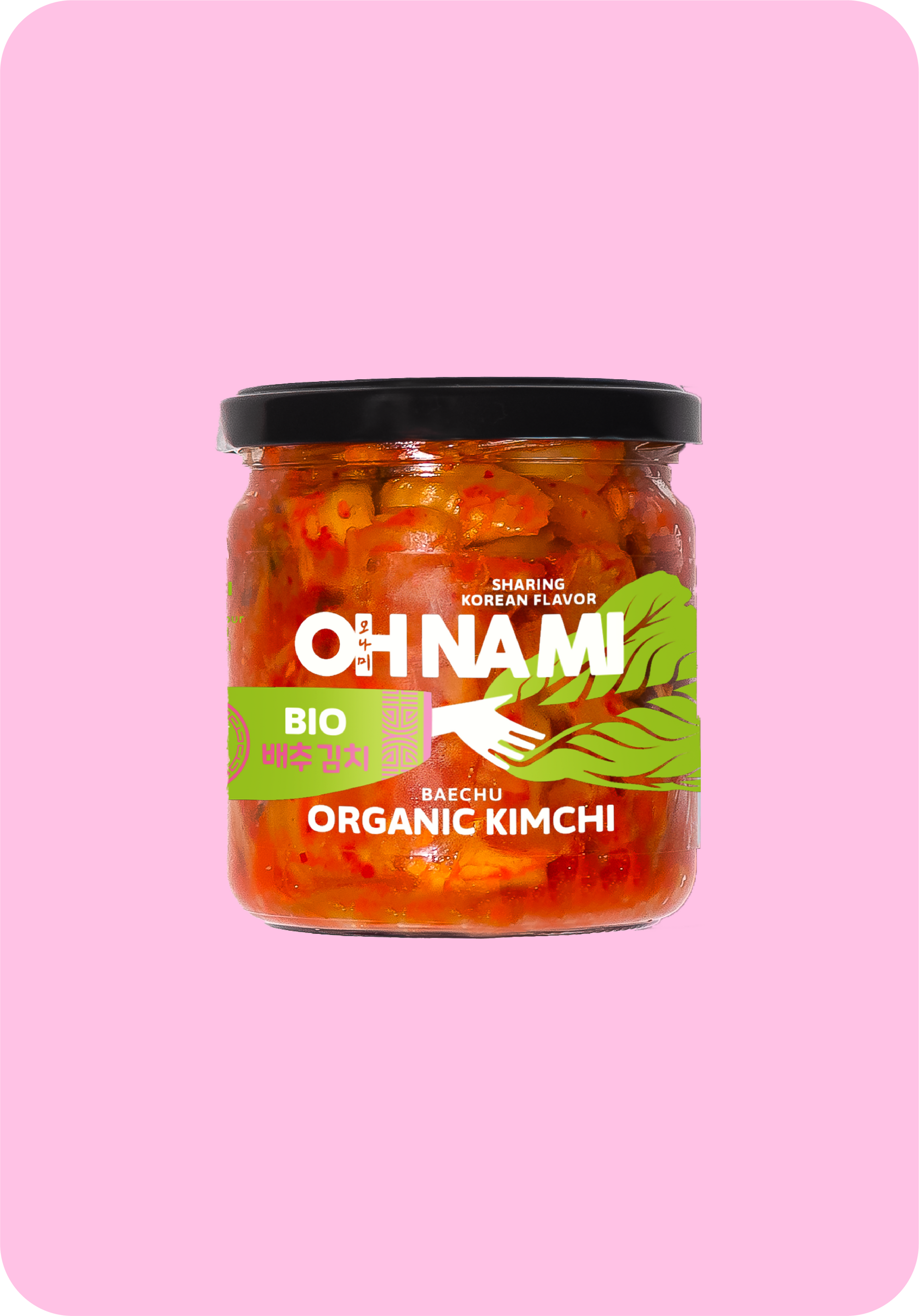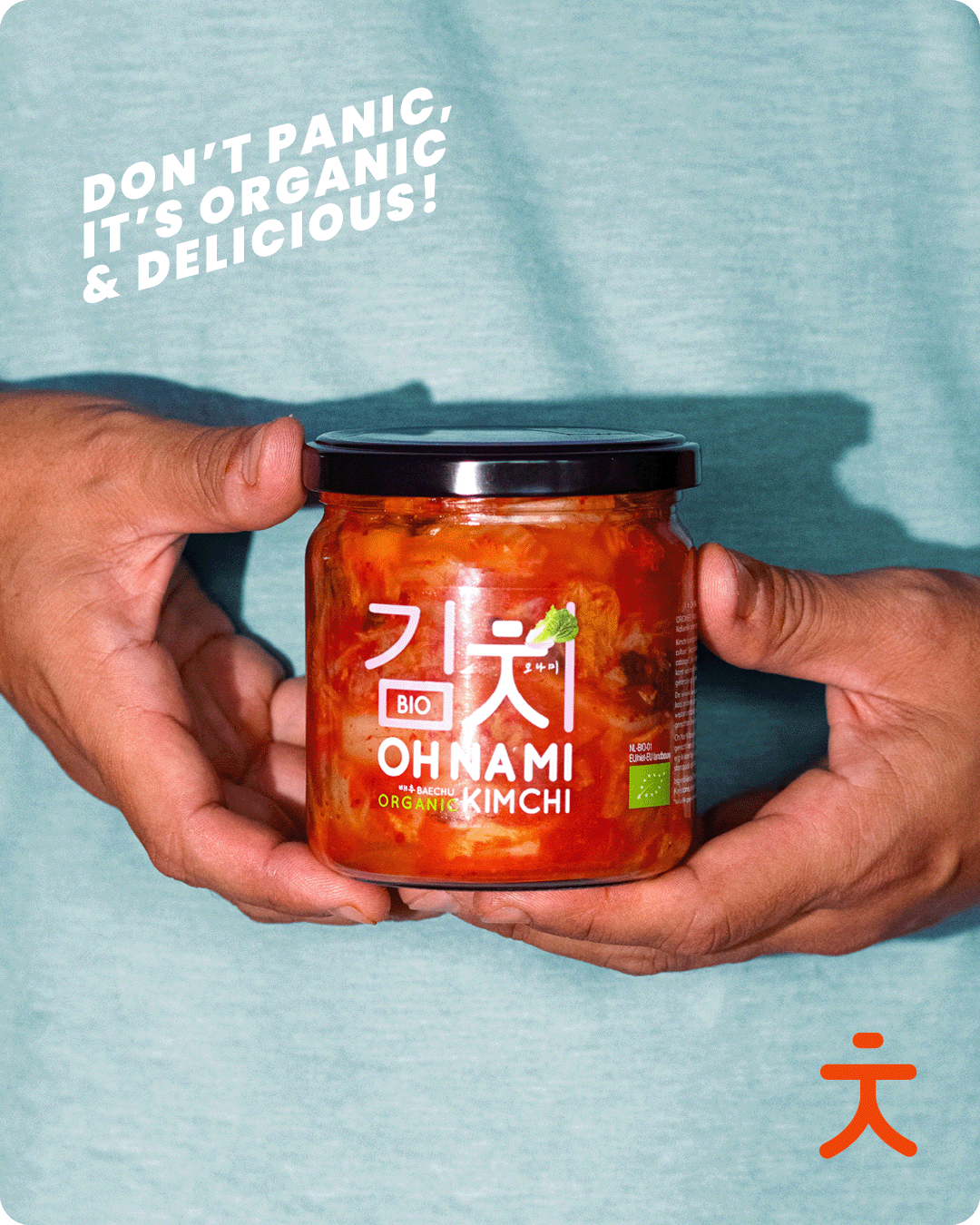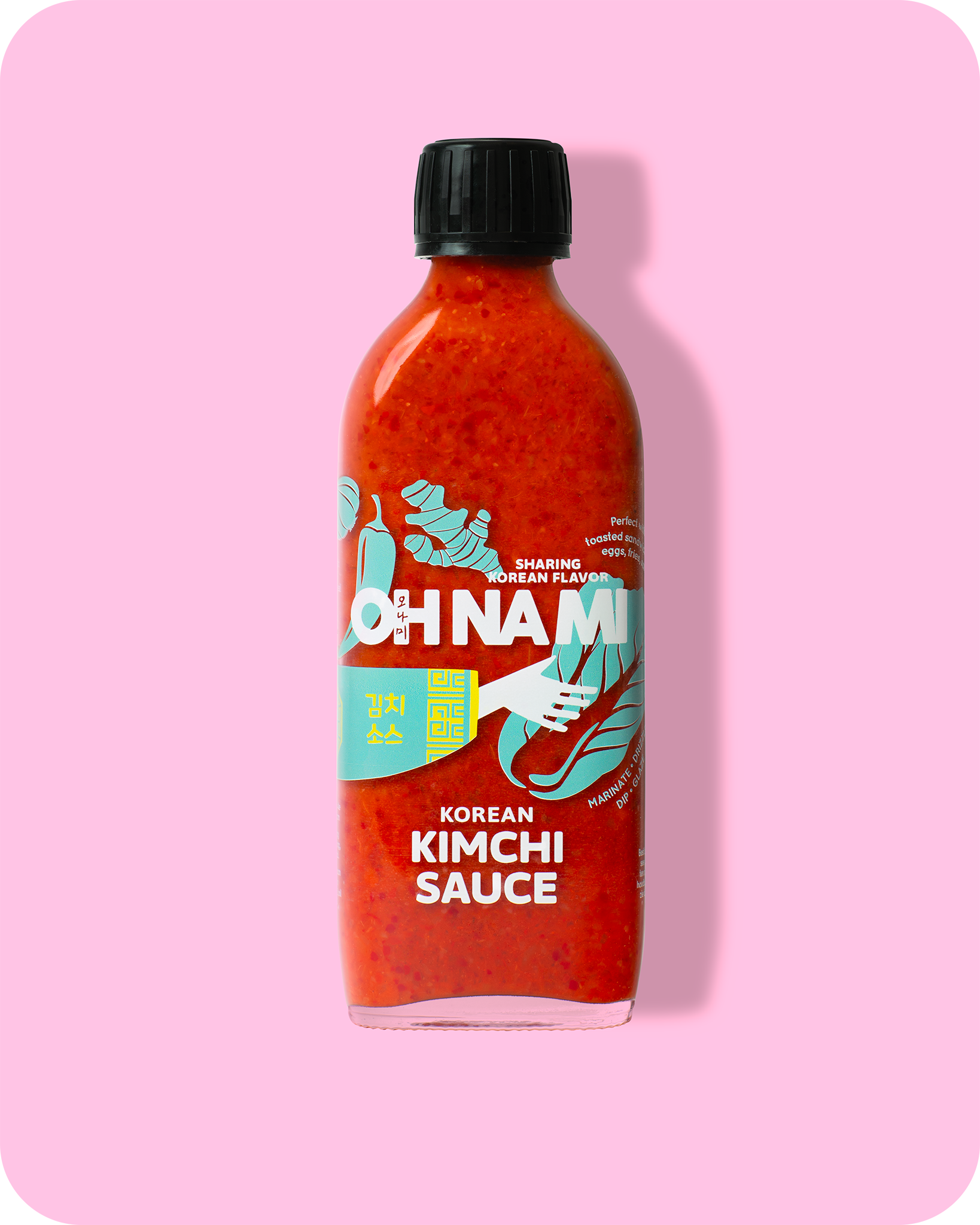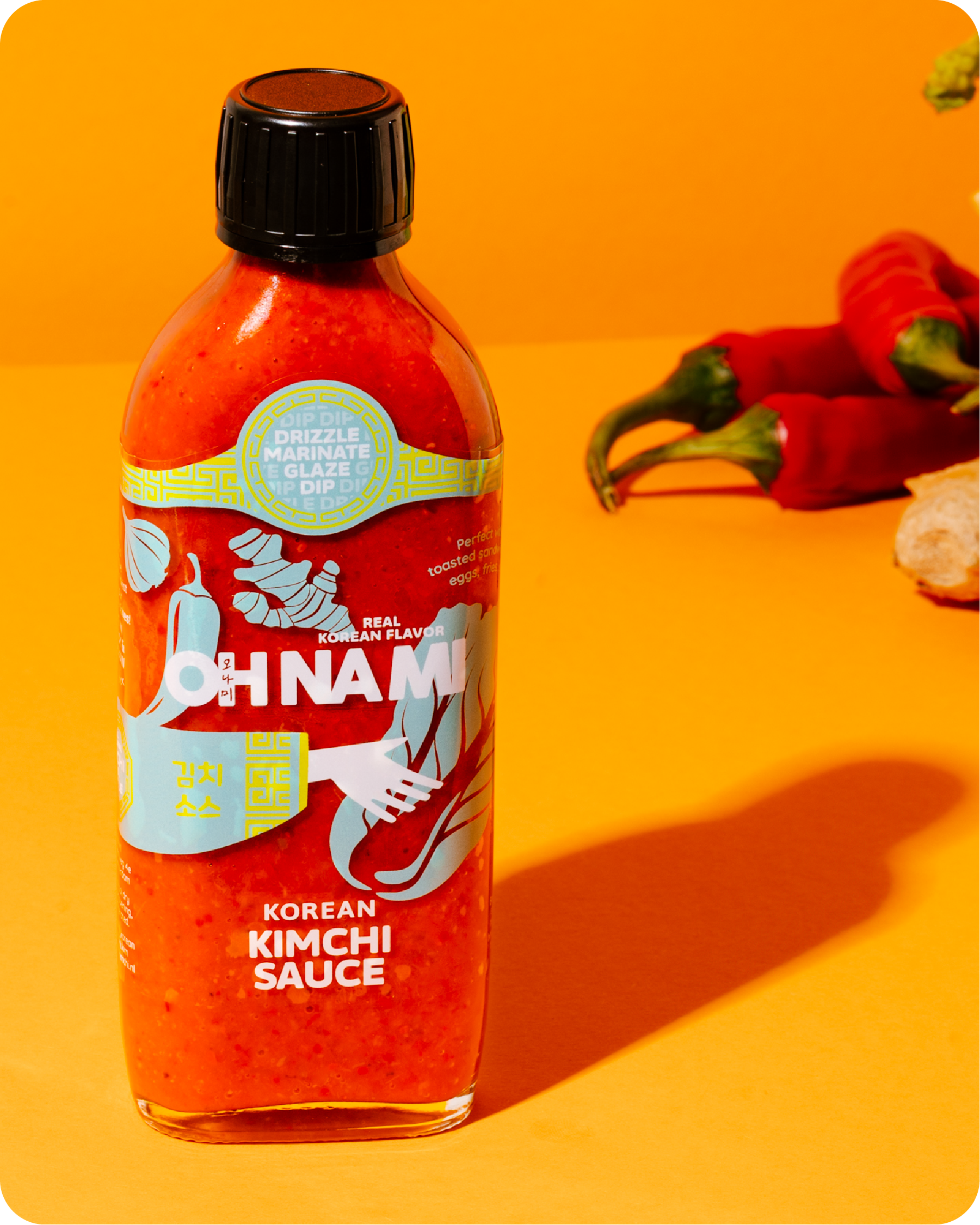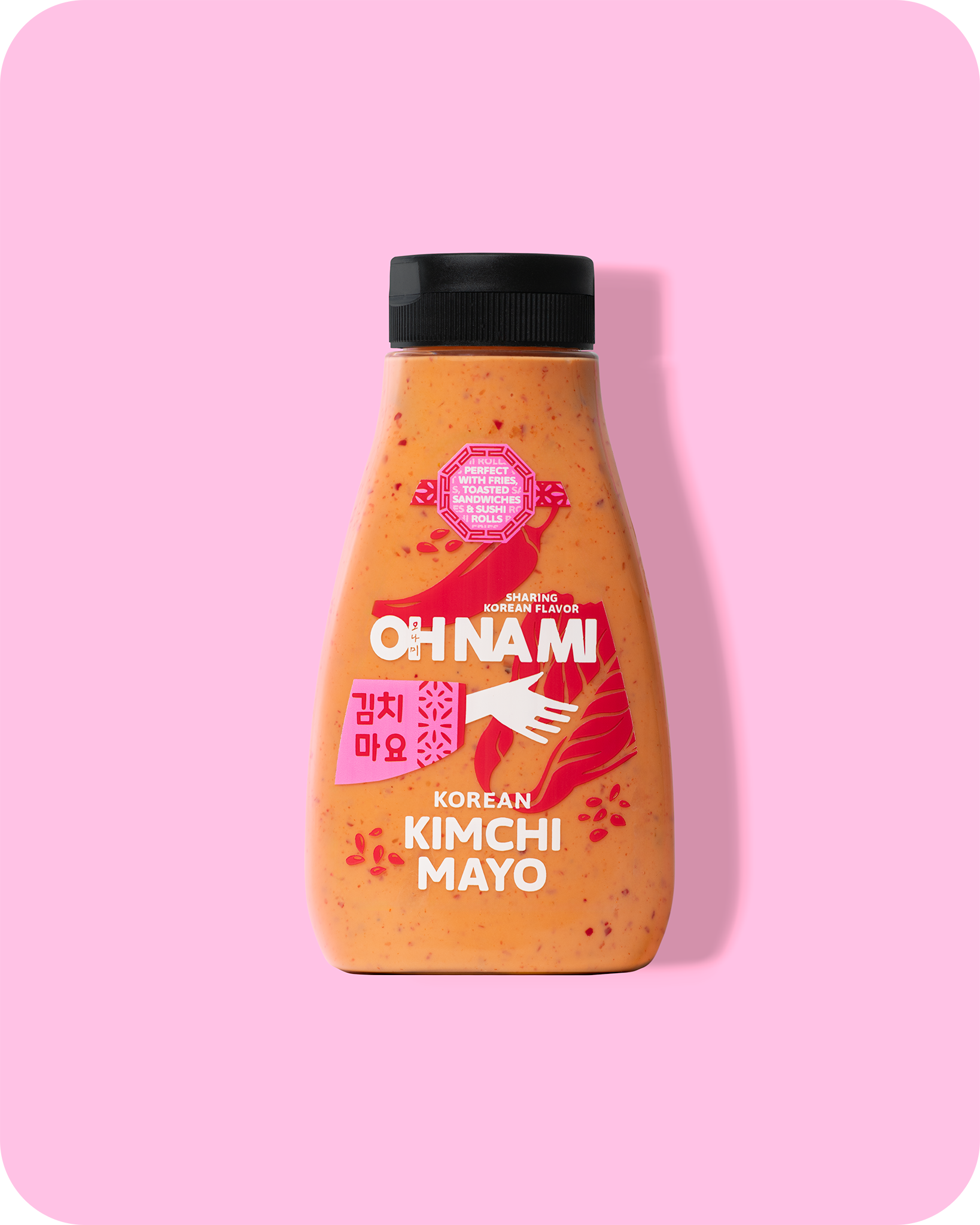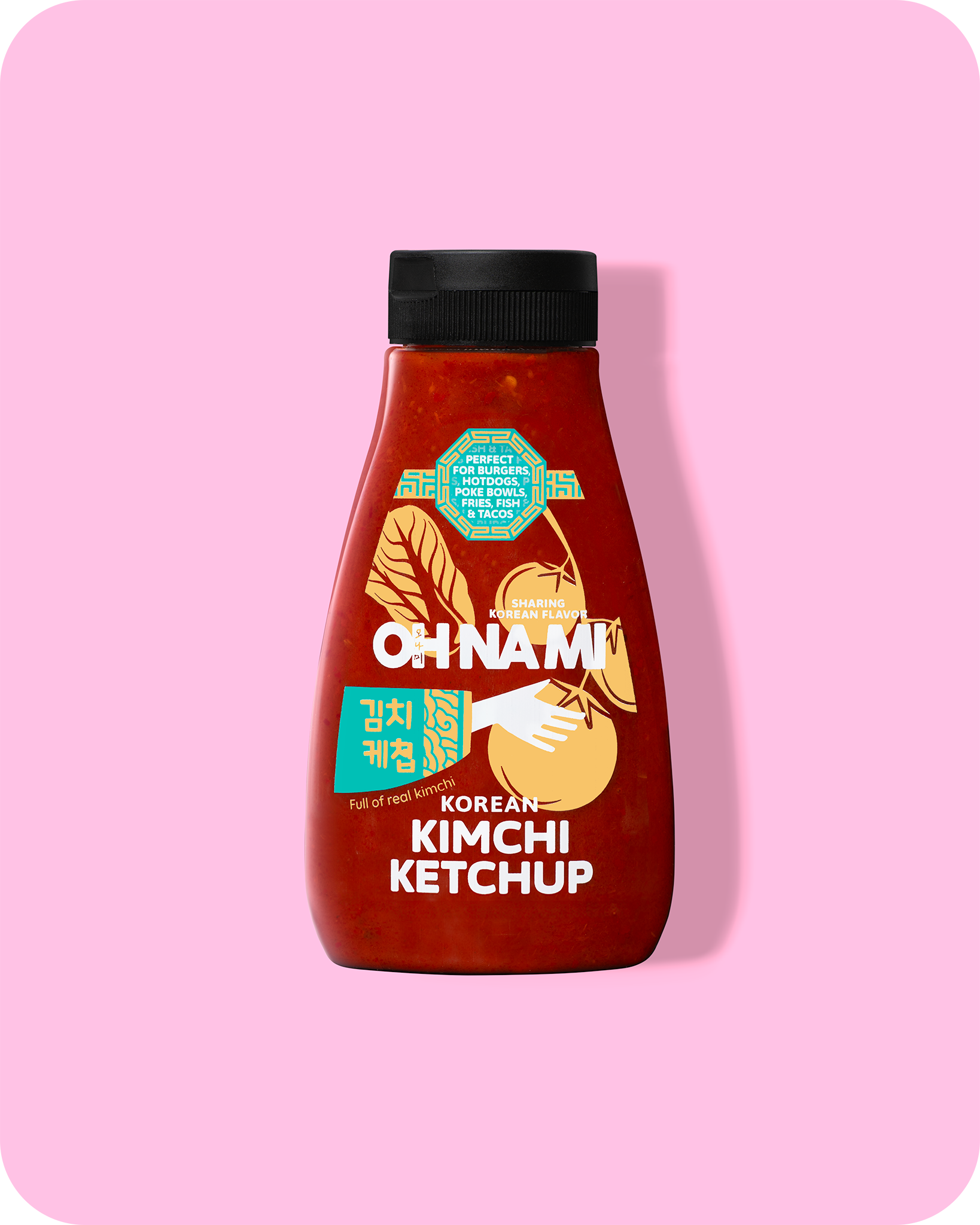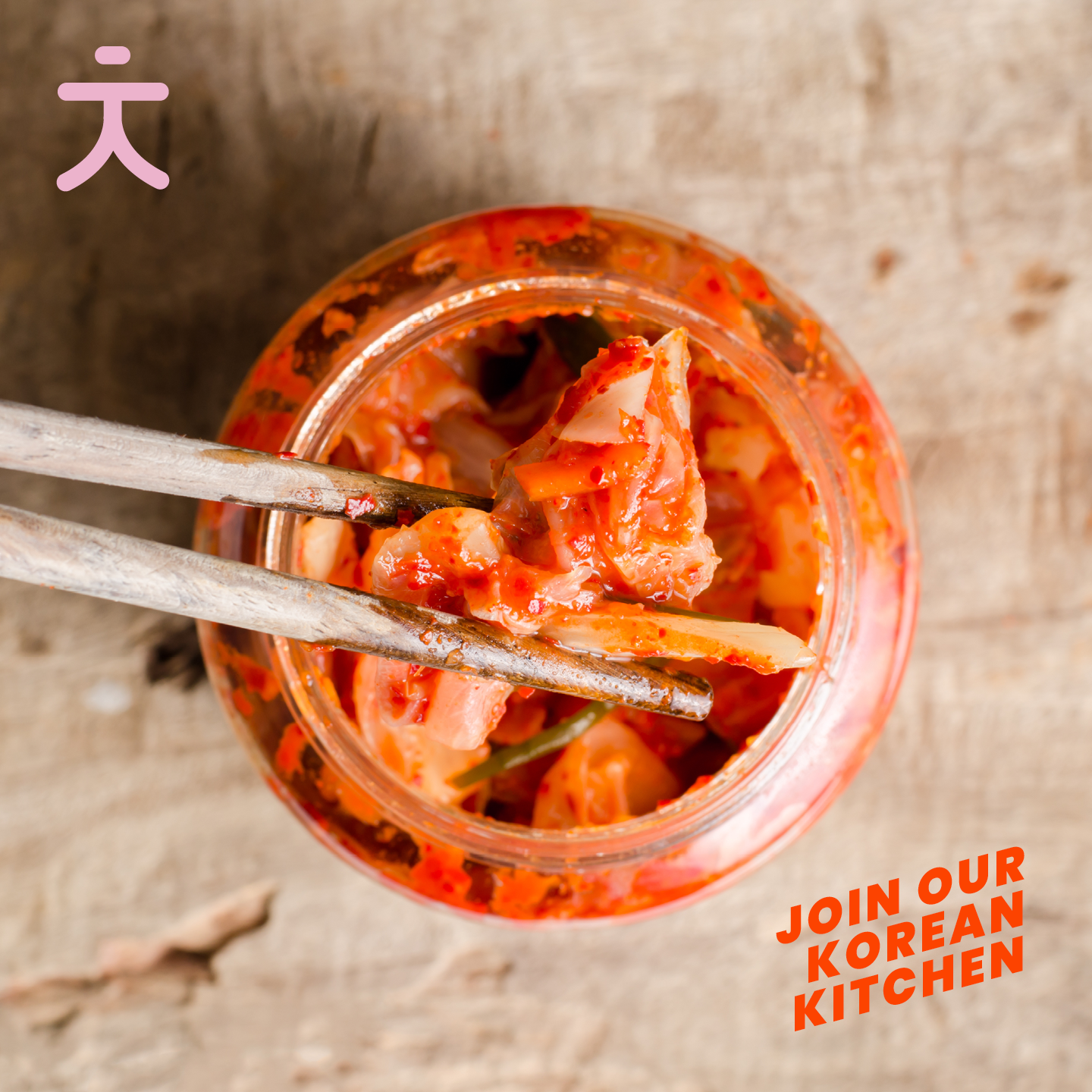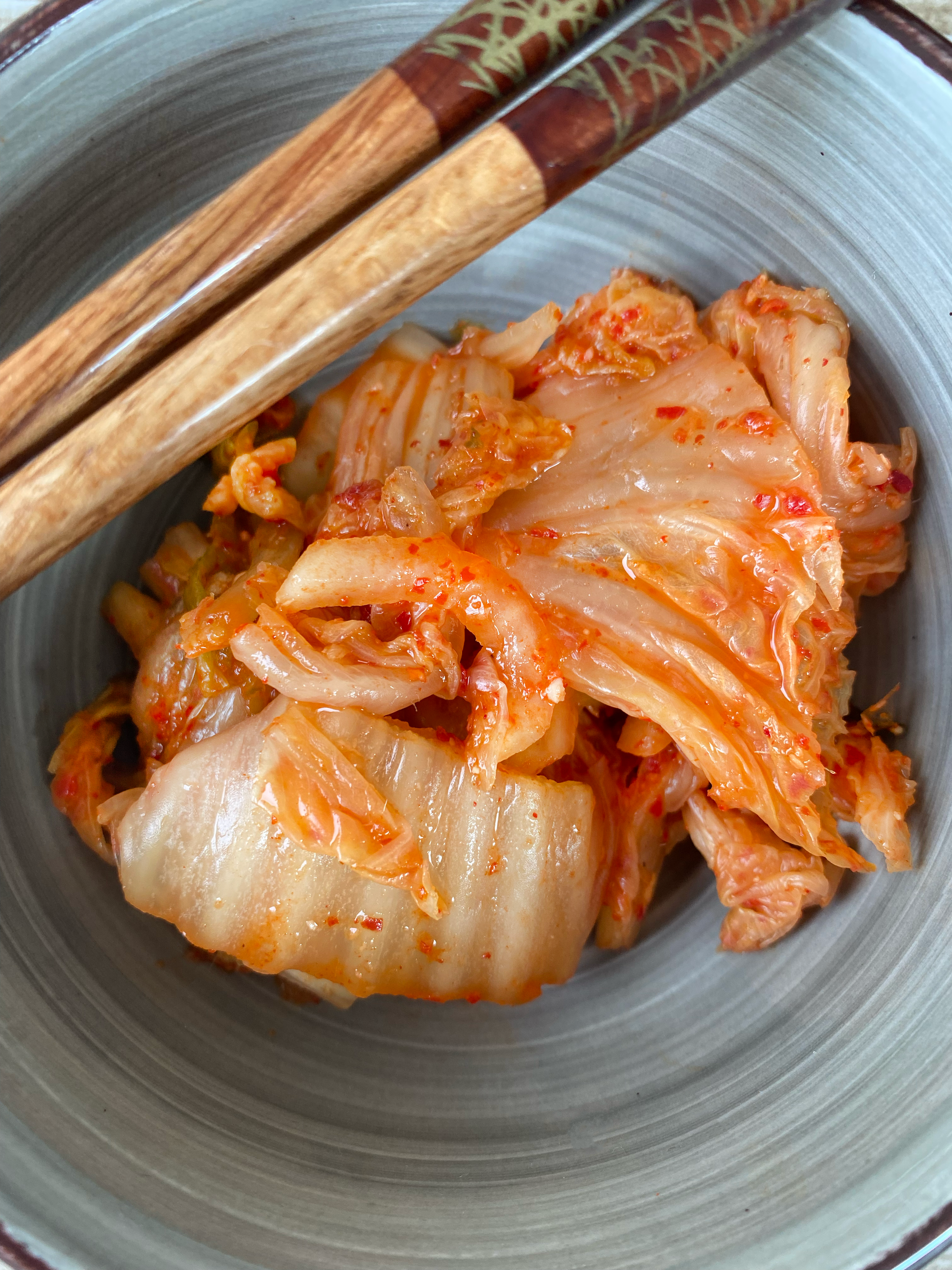
The Ultimate Guide to Kimchi: From Tradition to Taste
Kimchi, a staple of Korean households for generations, has gained superstar status in the kitchen, and it’s easy to see why. Its distinctive flavors, variety of uses, and health benefits have made kimchi a global sensation. But, if you're wondering, "What is kimchi?" or are curious about its unique taste, tradition, and variety of Korean products such as the kimchi sauce, you've come to the right place. We'll delve into the world of kimchi, its flavor profile, and the secrets behind its delicious sauce. So, what is kimchi, what can you do with it and how does kimchi taste?
What is kimchi?
Kimchi is a traditional Korean dish made primarily from fermented vegetables, with napa cabbage (Chinese cabbage) and Korean radishes being the most common choices. Carrots, radish, cucumber, and scallions are also frequently used as a vegetable for other types of kimchi.
Other ingredients you can find in kimchi are garlic, ginger, carrot, salt, and chili peppers, and in some kimchi recipes, you find fish sauce. In our Oh Na Mi Original and Bio Kimchi, we don’t use any fish sauce. These vegetables are seasoned with a mixture of spices, creating a signature flavor that’s both spicy and tangy. This mix is then fermented. This was initially done to keep the vegetables preserved to be enjoyed throughout the winter. In the Netherlands, we often pickle cucumbers and onions. Not surprisingly for the same original purpose as the Koreans. Our friends at Kesbeke are the most famous example of this in The Netherlands. We even have a special kimchi collaboration with them! Read all about our collaboration here.
As we mentioned before, cabbage is the most common vegetable used to make kimchi. There are hundreds of kimchi recipes that vary depending on the region and season in which they are produced.
In Korea, each household has its own kimchi recipe. Truly, their unique way of making kimchi. I grew up in Delaware with my American dad and my Korean mother. We always had an endless supply! My mom told me a story once-that, as school children, they would get together at lunch and trade kimchi’s with one another. Some are a bit more sour, others spicier, and some maybe full of sugar. Even at their young age, they knew who had the most delicious kimchi, and everyone wanted THAT one.
How does kimchi taste?
Kimchi’s flavor is complex and varies widely depending on the recipe. The main flavor of kimchi is a combination of sweet, spicy, sour, and umami flavors. The flavor will also vary depending on the vegetables you choose, the temperature and length of fermentation, and the amount of salt or sugar used. It's achieved through a careful balance of ingredients and processes. So, how does kimchi taste?:
Well, this depends on when you eat it.
Some obvious notes: if you eat it on the same day you make it, you’ll get a super spicy, sweet, crunchy, raw kimchi. This is what they eat on kimjang day(or kimchi-making day).
From this point on, it begins to develop its complex flavors.
Fermentation process
Due to the fermentation process, fully ripened kimchi typically exhibits a predominant sour flavor. This tangy and pungent taste is a result of lactic acid produced by bacteria during the fermentation, similar to the flavor profile of sauerkraut.
Red Pepper Powder
This ingredient provides the characteristic spiciness of kimchi. The amount of red pepper powder used can vary, affecting the dish's overall heat level. The spiciness of kimchi can also vary, depending on the quantity and type of pepper used.
Do you want to know more about the differences in peppers? We wrote an article about the Korean chilis that you can read here.
Garlic and Ginger
These aromatic ingredients add depth and complexity to the flavor profile, enhancing the umami notes. Its flavor becomes more pronounced as it ferments.
Fish Sauce or Salted Seafood
Kimchi may also feature ingredients like fish paste, fish sauce, or anchovies, which contribute to a pronounced umami flavor, particularly in fish-based variations. On the other hand, kimchi without fish, especially when made with radishes or cucumbers, will give you a light and fresh flavor profile.
Sugar
Sugar provides a touch of sweetness that balances the spiciness and sourness of kimchi. The sweetness eventually ferments away and provides a new level of sour and umami.
Salt
Salt helps preserve the vegetables and controls the fermentation process. Too little: not good. You’ll end up with a lot of unwanted bacteria and fungus. Too much salt? Well, imagine trying to taste anything through all that salt!
What is Kimchi Sauce?
With explaining what kimchi is we often get the question; ‘But what is Kimchi Sauce then?’. Well, Kimchi sauce, often referred to as Kimchi paste (jang) or Kimchi seasoning, is the secret behind kimchi's unique taste. It's the blend of all the ingredients mentioned above, meticulously combined to create the perfect balance of flavors.
What is Oh Na Mi Kimchi Sauce?
In 2020 we created a new product, Oh Na Mi Jang. We launched the first Kimchi Sauce produced in the Netherlands. The recipe is pretty simple. We took our leftovers and carefully blended them together to construct a melody of flavor. Natural sugars are used, but these are largely processed by the bacteria during the fermentation process.
Kimchi's Rise to Global Fame
The popularity of kimchi has grown exponentially around the world in recent years, and it's not just because of its delicious taste. Kimchi is celebrated for its numerous health benefits, such as probiotics that support gut health, vitamins, and antioxidants. This is a much-welcomed bonus. It’s not often that something so delicious can actually be healthy too. Combined with the ability to share our experiences and culinary discoveries on social media, you can see why it is such a sought-after superfood in many countries.
So, whether you're a seasoned kimchi enthusiast or new to the world of Korean cuisine, understanding "what is kimchi" and exploring its flavors, including the spicy kick and umami goodness of kimchi sauce, is a culinary adventure worth embarking on.
For more information on kimchi, Korean flavors, and what makes our Oh Na Mi’s kimchi exceptional, dive into our website and explore our wide range of Korean products. Join us on our mission to make kimchi a household name.

